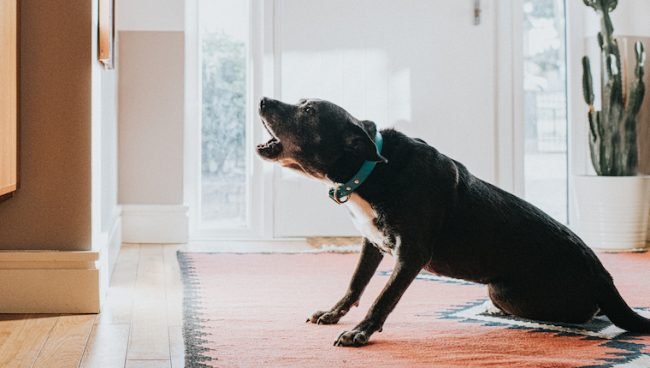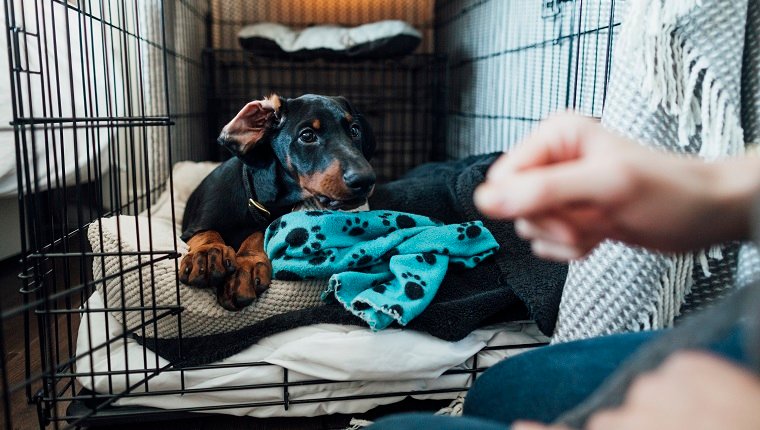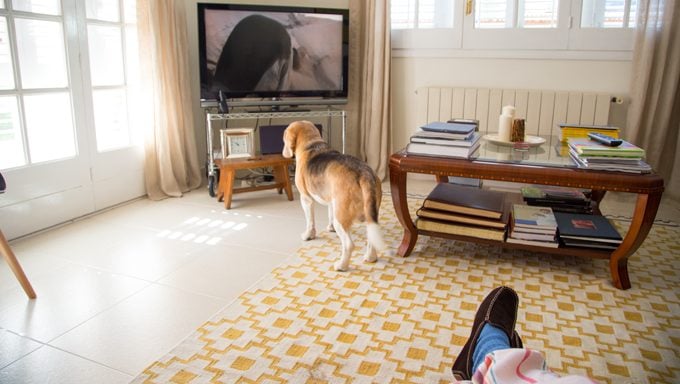Can dogs eat gummy bears? Are gummy bears safe for dogs?
Sunscreen for dogs: everything you need to know
How to Train Your Dog to Have Bite Inhibition
An important part of every puppy’s early education should include learning how to use teeth. Using the mouth and biting is a natural behavior for puppies, but it is important that the dog learns to use its mouth gently.
For most of us, when we feel those puppy teeth as sharp as needles biting us, our first instinct is to stop the behavior. Before teaching your puppy not to bite, you must first teach the puppy that when it bites, the puppy should bite down gently and without too much pressure. This is called bite inhibition, and it should be part of your puppy’s socialization plan. It’s not particularly difficult to teach, but it does require commitment and persistence from the owner. Training is necessary and worthwhile because it prevents your dog from biting too hard.

Definition: Bite Inhibition is a training method that teaches a dog to bite without applying pressure, greatly reducing the risk of extremely harmful bites. While bite inhibition doesn’t completely prevent biting, it does teach a person to bite without causing real harm.
Why Teach Bite Inhibition?
All dogs have the potential to bite. It is important that dog owners do their best to train their dogs so that they can prevent dog bites. Preparing for the worst is still realistic. If your puppy grows up to bite, you don’t want the adult dog to put a lot of pressure on it. Teaching a puppy how to suppress a bite can mean the difference between being bitten by your dog and taking the victim to the hospital with the bite. This is also important for dog interactions, as dogs use bite inhibition to maintain a safe level of play when playing together. Dogs that do not properly adapt to this behavior may bite too hard while playing, leading to dog fights or other negative interactions.
Teaching Soft Bites
The first step in training bite inhibition is to teach your puppy to use its mouth gently. If your puppy is allowed to stay with its pups until 8 weeks or older, then the puppy’s siblings have already started the course. If one puppy bites a littermate hard and the other puppy will usually scream or stop playing. This lets the puppy know that the bite is too heavy.
When you’re playing with your puppy, you can follow the example of littermates (even if they’re not there). Let your puppy bite a little, as long as it doesn’t really hurt you. When your puppy bites too hard, say “ouch” in a firm voice. If the puppy continues to bite hard, you can say “ouch” and then stand up and temporarily stop playing for a few minutes. Your puppy will soon learn that if it wants to continue playing games with you, it must use its mouth gently. A puppy can only learn to use its mouth gently through repetitive and sustained training.
Start Reducing Biting Behavior
Once your puppy is able to use its mouth gently, it’s time to start reducing the frequency of your puppy’s bites and bites while playing. Remember, before you know it, the cute little fur in front of you will come of age, and you, your friends, and family won’t want the puppy to use you as a chewing toy.

Start by teaching your puppy the “leave it alone” command. You can hold some treats in your hand, give your dog orders, and wait until it backs up a bit. When the dog backs off, praise it immediately and give it treats. At first, your dog may only have a few seconds of calm and quiet, and will not actively try to get a reward, so you must act quickly to reward calm behavior. Practice through a few sessions until your puppy responds to commands every time, and you can increase the length of time between giving commands and rewards. Now, as soon as your puppy starts opening your hand with its mouth, you can start giving it “don’t move” commands. In this way, you can slowly eliminate the open mouth behavior completely, or at least limit it to when you initiate it while playing. Now you should have a dog that never uses its mouth without being invited to play, and when it does, it moves very gently. Similarly, puppies learn through reinforcement and consistent information. This is imperative; otherwise training and bite inhibition exercises will not be successful.
Redirect
When the puppy is in a playful mood and you want to divert energy (and the possibility of a naughty bite) away from you (or your child), place enough toys around the house. When your puppy starts biting you with its mouth or other household items that are forbidden to enter, give it a toy and reward it for playing with the toy. This is great for giving puppies time to play and learning what is appropriate. If you have small children at home, keep an eye out for puppy toys and beloved stuffed animals. For puppies, they all look the same.
Questions and Proofreading Behavior
A common mistake is to curb biting behavior by punishing puppies. While this may be a quick, short-term solution, it’s not quite a solution. Punishment does not teach the puppy the ability to suppress bites. If one day a puppy (or dog) does bite, they are likely to bite hard instead of the restraint bite you are trying to teach them.
Make sure you (and all family members) understand how the training is going and know how to implement it. Occlusal inhibition training is performed in different situations and continuous reinforcement is carried out daily.



